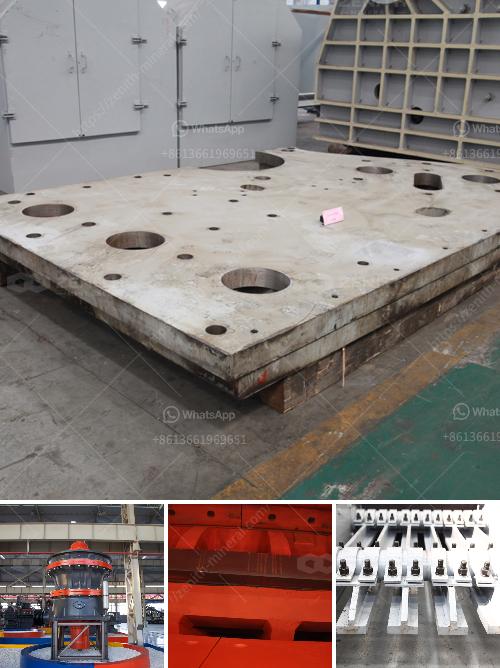Building a limestone crusher involves several steps. Here's a basic guide to get you started:
Materials and Tools Needed:
- Materials: Limestone, steel for the frame, gears, belts, motors, bearings.
- Tools: Welding equipment, cutting tools, measuring tools, screwdrivers, wrenches, safety gear (gloves, goggles, etc.).
Step-by-Step Guide:
-
Design the Crusher:
- Blueprint: Create or procure a detailed blueprint of the crusher.
- Dimensions: Determine the dimensions based on your requirement (i.e., the size of the limestone pieces you'll be processing).
-
Frame Construction:
- Material Selection: Use sturdy steel for constructing the frame.
- Cutting and Welding: Cut the steel pieces to the sizes detailed in your blueprint and weld them together to form the frame.
-
Jaw and Plates:
- Fabrication: Create the jaw and jaw plates from high-manganese steel which is resistant to abrasion. These are the main components that will crush the limestone.
- Attachment: Weld or bolt the jaw plates to the frame. Ensure they are securely fastened.
-
Mechanical Components:
- Motor and Gears: Attach a motor to the crusher, ensuring it has adequate power to crush the limestone. Use gears to control the speed of the crushing mechanism.
- Belts: Use belts to transfer power from the motor to the crusher mechanism.
-
Crusher Chamber:
- Design: The chamber where the limestone is crushed needs to be designed with enough space for the rocks to move and be reduced in size.
- Material Handling: Incorporate a hopper to feed the limestone into the crusher chamber.
-
Safety Features:
- Guards and Shields: Install guards around moving parts to protect operators from injury.
- Emergency Stop: Ensure there is an easy-to-reach emergency stop button.
-
Assembly:
- Putting It Together: Assemble all the components - frame, mechanical components, and jaw plates.
- Alignment: Make sure everything is properly aligned and securely fastened.
-
Testing:
- Initial Run: Run the crusher without load to ensure all parts move smoothly.
- Adjustment: Make necessary adjustments to the settings and alignment.
- Test with Limestone: Start with a small batch and check the consistency of the crushed material.
-
Maintenance:
- Regular Checks: Perform routine maintenance checks to ensure the crusher is in good working condition.
- Lubrication: Keep all moving parts properly lubricated to reduce wear and tear.
Final Tips:
- Safety First: Always prioritize safety by wearing appropriate gear and ensuring all safety measures are in place.
- Consult Professionals: If this is your first project, consider consulting with or hiring professionals to ensure the crusher is built to standard.
Building a limestone crusher is a complex task that requires careful planning and precise execution. Good luck!

